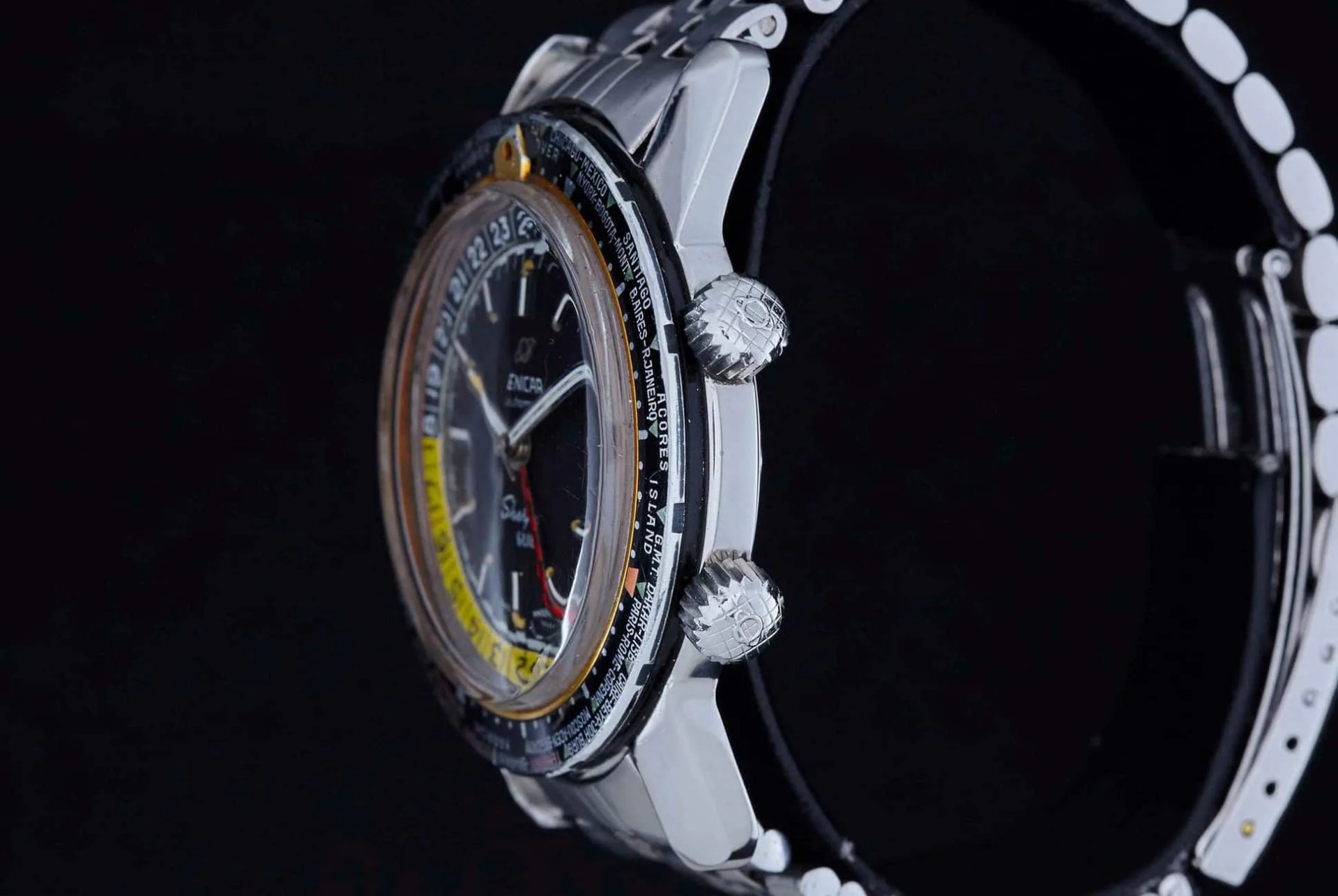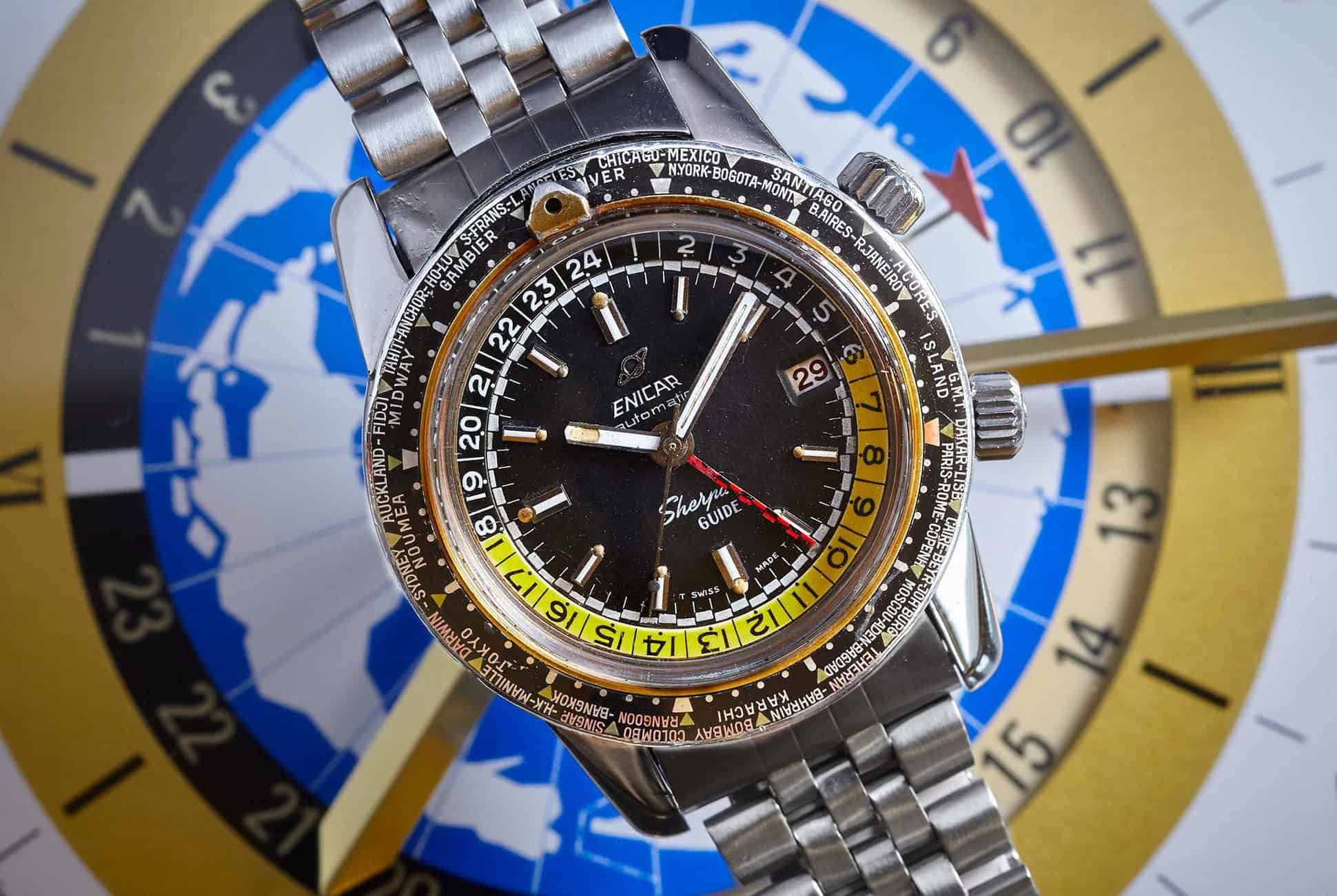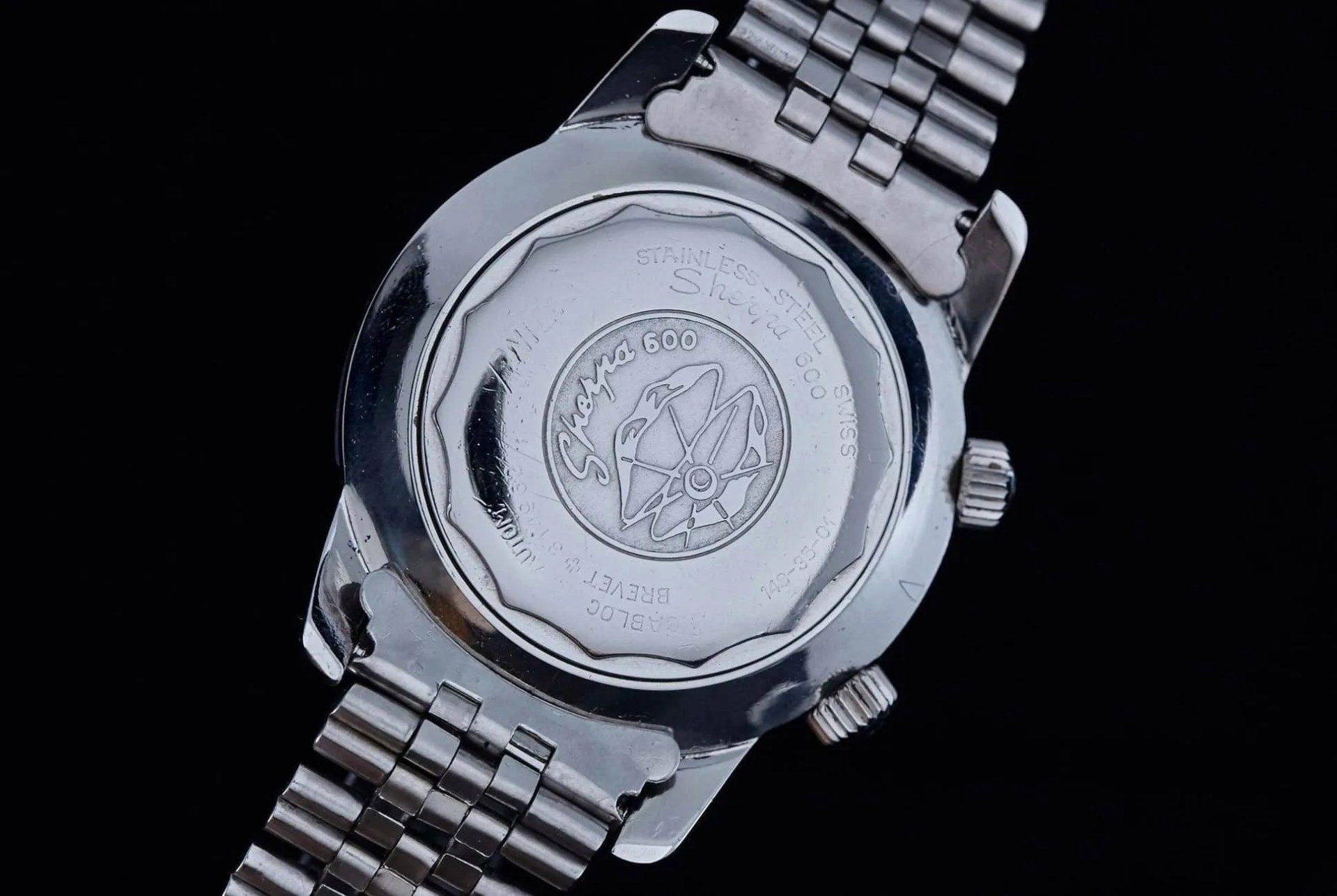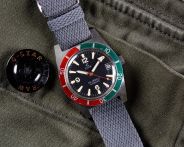Welcome to Watches You Should Know, a biweekly column highlighting little-known watches with interesting backstories and unexpected influence. This week: the Enicar Sherpa Graph.
The adventure watches of the ’50s and ’60s are the thing right now. Look at prices for old Submariners and Explorers and Speedmaster and tell me otherwise. But then again, these are the icons, and as most watch enthusiasts know the watch world was much bigger than what just Rolex and Omega were doing. If you were to look at Enicar’s offerings, for example, you’d find another illustrious history of adventuring in timekeeping. However, unless you’re deep in the watch nerd world, you probably never heard of the brand at all.
Enicar’s roots go back to the early 1900s, but as a brand, it wouldn’t hit its stride until the post-WWI years, when it started manufacturing its own movements — which it boasted as being “ultrasonically cleaned” — and venturing into tool watches. Arguably one of the most significant introductions during this time was the Seapearl 600 in the early 1950s, a time when the dive watch was entering the fray. The Seapearl, notably, didn’t feature a rotating timing bezel like the Submariner or Blancpain Fifty-Fathoms of the same era, but it was water-resistant to 600 feet and featured a dial smothered in lume.
More Watches You Should Know
• Eterna Kon-Tiki IDF Issue
• Sinn EZM-1
• Omega 30i Tourbillon
In fact, the Seapearl was tested by the US Navy at the time and its performance underwater compared favorably to the Submariner and Fifty-Fathoms. However, the watch didn’t become standard issue. A report indicated the radioactivity from the lume was well over acceptable levels and the lack of a rotating bezel hindered its functionality. Also, they called the dial “gaudy and strange looking.” Ouch. Still, despite not becoming an issued watch, it was still a common fixture on divers’ wrists thanks to its water-tightness and lightweight build, according to Worn & Wound.

More important to watch lore, though, was the use of Enicar Seapearl watches on a Swiss expedition to scale both Mounts Everest and Lhotse in the Himalayas in 1956, just a couple years after Sir Edmond Hillary’s pioneering ascent. Enicar quickly capitalized on the success, touting the Seapearl’s success on Everest, adding the “Sherpa” moniker — a reference to Himalayan mountaineering guides — creating and subsequently an entire line of Sherpa tool watches. It’s these watches that have become the most sought-after in the brand’s history.



